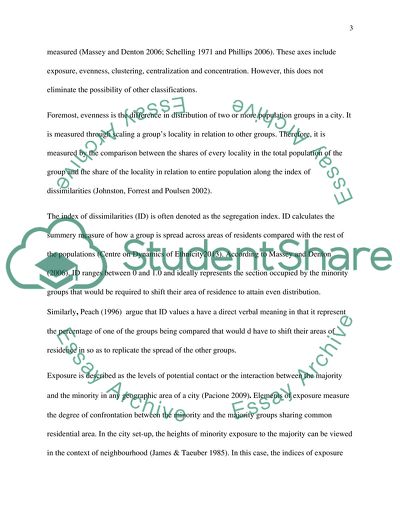Cite this document
(Segregation in Cities Report Example | Topics and Well Written Essays - 1250 words, n.d.)
Segregation in Cities Report Example | Topics and Well Written Essays - 1250 words. https://studentshare.org/geography/1860542-segregation-in-cities-is-easy-to-measure-but-much-more-difficult-to-explain-critically-consider-this-statement
Segregation in Cities Report Example | Topics and Well Written Essays - 1250 words. https://studentshare.org/geography/1860542-segregation-in-cities-is-easy-to-measure-but-much-more-difficult-to-explain-critically-consider-this-statement
(Segregation in Cities Report Example | Topics and Well Written Essays - 1250 Words)
Segregation in Cities Report Example | Topics and Well Written Essays - 1250 Words. https://studentshare.org/geography/1860542-segregation-in-cities-is-easy-to-measure-but-much-more-difficult-to-explain-critically-consider-this-statement.
Segregation in Cities Report Example | Topics and Well Written Essays - 1250 Words. https://studentshare.org/geography/1860542-segregation-in-cities-is-easy-to-measure-but-much-more-difficult-to-explain-critically-consider-this-statement.
“Segregation in Cities Report Example | Topics and Well Written Essays - 1250 Words”. https://studentshare.org/geography/1860542-segregation-in-cities-is-easy-to-measure-but-much-more-difficult-to-explain-critically-consider-this-statement.


